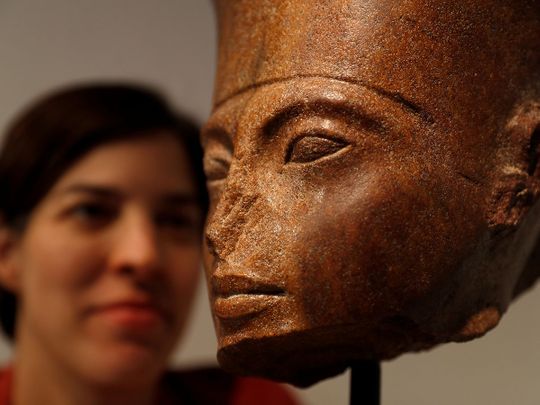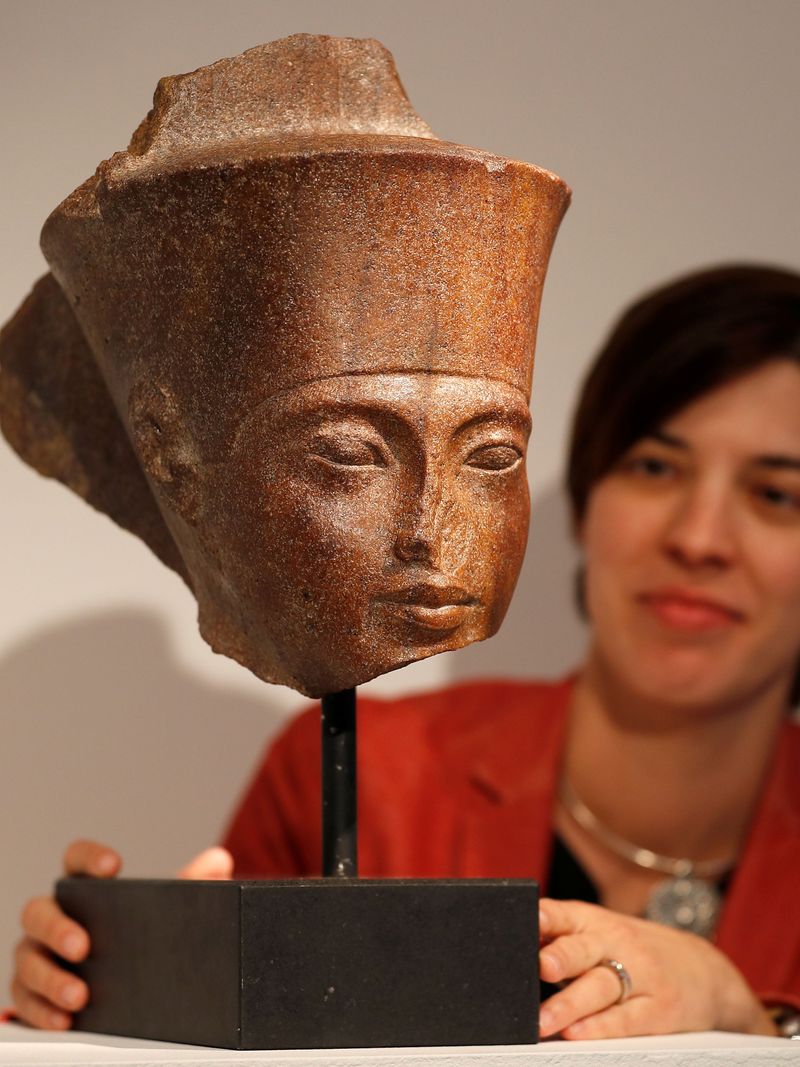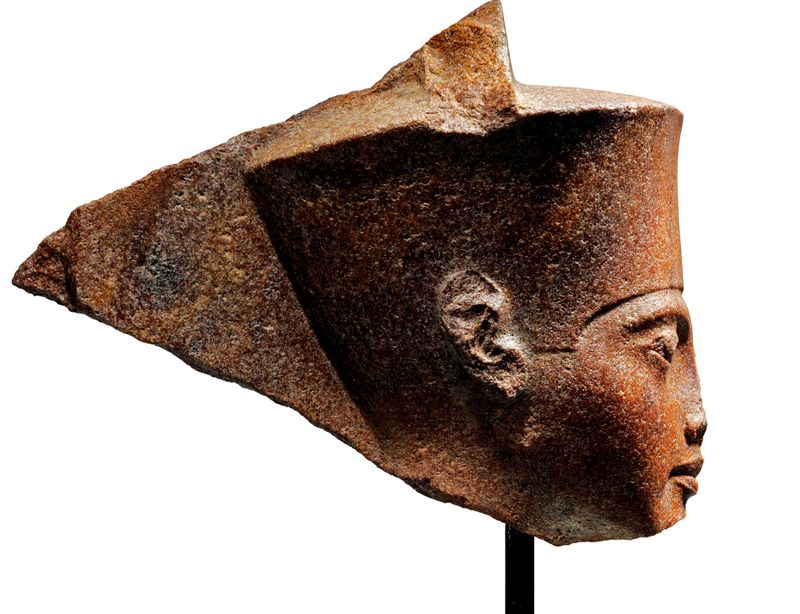
Cairo: Egyptian authorities have said they will take a legal action after an auction house in London sold a 30,000-year-old statue believed to depict the famed Pharaoh Tutankhamen.
A 3,000-year-old bust of Egypt's boy king Tutankhamen was auctioned off Thursday in London for nearly $6 million, despite claims by the Egyptian government that it was looted and smuggled out of the country.
After a crisis meeting late Monday, Egypt’s governmental Antiquity Repatriation Committee led by Minister of Antiquities Khaled Al Enani issues a statment saying it will hire a British legal office to take all legal measures including a lawsuit.
They claimed the sale is not valid because the auction house has not been able to verify the ownership of the 11-inch brown quartzite statue of the pharaoh, widely referred around the world as King Tut.
Tutankhamen became pharaoh at age 9 and ruled until his death at 19, believed to be around 1323 B.C. His remains were excavated in 1922 along with thousands of ancient artifacts, including a gold mask of the king, that to this day remains the most significant and well-known archaeological find in Egypt. The collection has traveled to museums in the United States and around the world, and is currently in Paris.

"You are not selling an ordinary King," said Hawass. "You are selling a very famous King, a king that captured the hearts of people all over the world."
The sale of the statue, he added, is not just a loss for Egypt, but for art lovers globally. The new owner he fears, "will show this statue in a dark room. It will be hidden for history instead of being in a museum in Egypt for everyone to see."
"There is no ethics here at all," said Zahi Hawass, Egypt's former minister of antiquities affairs, in a telephone interview on Friday. "Christie's has no evidence that this head of Tutankhamen left Egypt legally. They did not offer to us any kind of papers to show the legality of this statue.
"This is a black day for Christie's."
The panel added in a statement released early Tuesday it will also ask Egyptian embassies to keep track of the 32 sold Egyptian artefacts, including the King Tut bust, and notify authorities of their presence in any country to help their home return.
“The committee expresses deep dismay over the unprofessional conduct of selling the Egyptian antiquities without proving their ownership documents and expresses its extreme astonishment about British authorities’ failure to offer the expected backing in this regard,” the panel added.
Representatives of the ministries of foreign affairs, justice and the interior as well as prosecution and famous Egyptian archaeologist Zahi Hawass attended the meeting.

The news of the July 4 sale outraged Egyptians, and prompted a flurry of moves by Cairo to block the auction and demanded the return of the King Tut relic believed to have been smuggled out of the country decades ago.
Christie’s said that the28.5cm-long rare statute was from the private Resandro collection, contending it has a history of legal ownership.
According to the auction hall, the bust was acquired from Heinz Herzer from Munich in 1985 and was earlier owned by Austrian Joseph Messina.
The statue shows the boy king in the shape of ancient Egyptian deity Amun.
In a statement, Christie's said that the statue had never been the subject of an investigation and that it never would have sold it if there were legitimate concerns. Egypt, the company said, did not express concern when the bust was publicly displayed for a number of years or when it was part of a private collection that last sold for $3.7 million in 2016.
"We recognize that historical objects can raise complex discussions about the past; yet our role today is to work to continue to provide a transparent, legitimate marketplace upholding the highest standards for the transfer of objects," the auction house said.
Egyptian authorities said that the statue was likely stolen during the 1970s from the Karnak temple in the Egyptian city of Luxor, near the tomb of the boy king in the Valley of the Kings.
In 1983, Egypt issued a law banning selling its ancient artefacts in a move aimed at protecting the country’s unrivalled treasures.
In recent years, Egypt has successfully restored several antiquities from different parts of the world, as the country is seeking to use its ancient wealth to revive a vital tourism industry.











